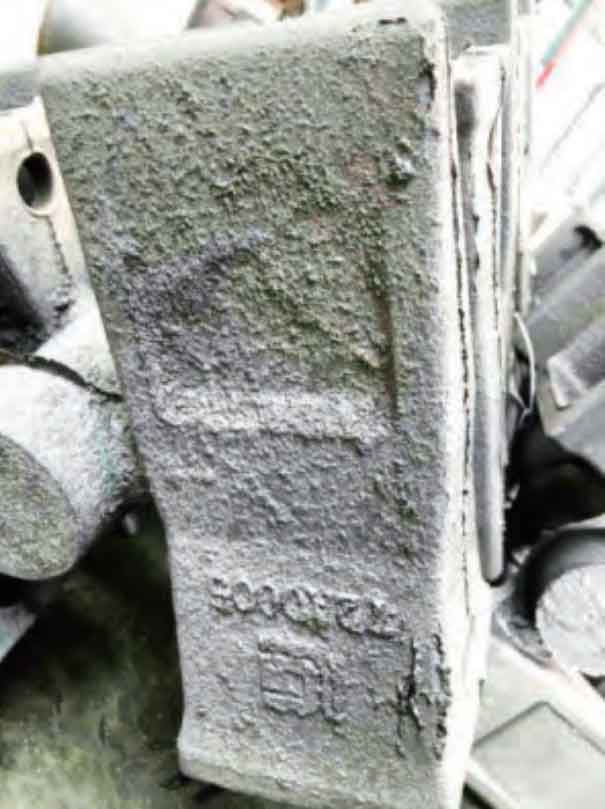The molten metal interacts with the surface of the mold cavity at high temperature. After condensation, a layer of hard to remove molten metal is firmly bonded to the surface of the casting. The chemical reaction between the molten metal and the mold shell material generates bonded sand (as shown in the figure). It often occurs at the lower end of the casting pouring part, close to the inner gate or riser.
In the actual production process, in order to reduce the production cost, the shell shape is generally not painted with paint, but directly formed for pouring. In order to ensure the fluidity and filling quality of liquid steel, the pouring temperature should not be too low. In this way, the high-temperature liquid steel directly contacts the sand mold surface, which is easy to produce chemical sand sticking defects, which brings great difficulties to the cleaning process and seriously affects the production efficiency and product quality.
Combined with the actual situation encountered in production, the causes of sand sticking are classified as follows:
(a) The silicon content of coated sand is low and the fire resistance is insufficient;
(b) The pouring temperature is too high and the fire resistance of shell surface is insufficient.
Preventive measures:
(a) Select coated sand or Baozhu sand with silicon content of no less than 95% (all links of Baozhu sand recycling shall be strictly controlled to improve the recovery rate and reduce the generation cost);
(b) Brush refractory materials locally on the shell to improve the fire resistance of the shell;
(c) The appropriate pouring temperature shall be selected to ensure not only the fluidity of liquid steel and mold filling capacity, but also the bearing degree of shell shape. Generally, the pouring temperature of the first string shall be controlled at 1580 ~ 1600 ℃, and the pouring temperature of the tail string shall not be lower than 1530 ℃.

